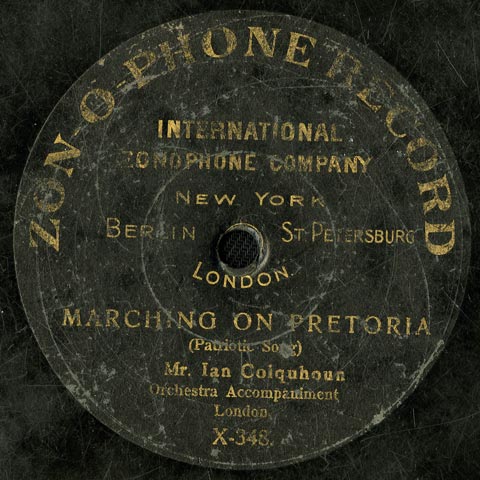When many of us first heard the folk song “We Are Marching to Pretoria” we sang along without really understanding the words or what they meant.
We didn’t even know where Pretoria was or why anyone was marching there.
So, we decided to shed some light on this popular folk song. In this post, we’ll talk about the origins of the lyrics to this South African folk song.
Let’s get started.
Origin Story: Boer Wars
The lyrics to the song “We Are Marching to Pretoria” refers to one of South Africa’s three main capital cities, Pretoria. Located in the northern part of the Gauteng Province, Pretoria was originally the capital of the Boer Republic of Transvaal in 1860.
Then, the Anglo-Boer War broke out between the British army and the Boers, who inhabited the land at that time and lasted from 1899 until 1902.
After several initial setbacks and an extended period of guerrilla warfare, it seemed that the Boers were making headway.
Their progress continued until Lieutenant-General Lord Smyth Baden-Powell landed at Cape Town with 170,000 troops and more on the way.
So, it was safe to say that the Boers were outnumbered. Still, they proved to be a highly skilled army and put up a good fight.
So, to solder his army’s conviction, Lord Baden-Powell sang “We Are Marching to Pretoria” with his troops.
Surprisingly, the song also became popular with the African side of the war. Yet, they sang it in the Afrikaans language, a sub-language of Dutch, which was a result of the Dutch occupation of the region, which lasted from 1652 until 1806.
Less than a year later, the British triumphed, and “We Are Marching to Pretoria” became a popular imperial song.
After their victory, the British took control of the Boer Republic, which was then divided into the Transvaal Colony and Orange River Colony.
Then, when the Union of South Africa was formed in 1910, Pretoria became the administrative capital. The country was still regarded as a British colony until the reign of the monarchy finally came to an end in 1961 and South Africa finally became a republic.
Earliest Recorded Version of Marching on Pretoria
Interestingly, this version is an adaptation of an American Civil War song titled “Marching Through Georgia” by Henry Clay Work from 1865.
Joseph Marais Brings Marching to Pretoria to American Audiences
Joseph Marais was a South African singer, songwriter, and folklorist, known primarily for his work in popularizing South African folk music in the United States during the mid-20th century. He moved to the U.S. in the 1930s and, along with his wife, Miranda, began broadcasting South African folk songs on American radio.
In his book World of Folk Songs, Jospeh Marais explains that the song was sung by both African and British soldiers during the Boer War. Each side had their own version.
Though the earliest history of the song is attributed to British forces in South Africa, the original lyrics sung by British soldiers remains a mystery.
A sanitized English version of the Afrikaans song was popularized by Joseph Marais; who introduced it to American radio audiences on his NBC show in 1939.
One of the defining elements of this song is the enthusiastic “Hurrah!” in the Josef Marais version following “We are marching to Pretoria, Pretoria, hurruh!”. This catchy part serves as a hook, which could have potentially resonated with both Afrikaners and English on the battlefield.
Despite its historical and cultural complexity, “Marching on Pretoria” remains a notable piece, offering a unique insight into the period of the Second Anglo-Boer war, and providing a fascinating glimpse into the evolution of music and recording industry preferences in the early 20th century.
The Weavers Version of “Marching to Pretoria”
The Weavers were an influential American folk music quartet that formed in the late 1940s. They consisted of members Pete Seeger, Lee Hays, Ronnie Gilbert, and Fred Hellerman. The band played a crucial role in popularizing folk music in the United States and were known for their rich harmonies and passionate renditions of folk songs from around the world. They also contributed significantly to the social protest movement through their music.
The popularity of Marais’ rendition undoubtedly contributed to The Weavers’ decision to include the song in their repertoire.
The Weavers’ version typically features the chorus sung in Afrikaans with English verses. Their rendition is often accompanied by guitar and banjo, reflecting the group’s folk origins. By including “Marching to Pretoria” in their repertoire, The Weavers demonstrated their commitment to sharing and preserving global folk music traditions.
Interestingly, the song became a point of controversy for The Weavers due to its historical origins and perceived glorification of colonialism. In response, the band members stated that they intended the song to represent solidarity and unity rather than conquest. Despite the controversy, “Marching to Pretoria” remains one of The Weavers’ best-known performances, illustrating their remarkable ability to adapt and share global folk music.
“I Am the Walrus” by the Beatles
Written by John Lennon, the opening line of The Beatles song “I Am the Walrus” is ”I am he as you are he as you are me and we are all together.”
It’s based on one of the lines in the song “We Are Marching to Pretoria,” which is “I’ am with you and you’re with me and we are all together.”
Lennon got the inspiration for the rest of the song from a mash-up of songs and poems like “The Walrus and the Carpenter” by Lewis Carrol.
When the words came together, they didn’t make much sense, which is exactly how Lennon wanted it. His aim was to confuse scholars who had started analyzing and dissecting all Beatles songs in the hope of finding deep meanings.
So, despite having gotten part of its inspiration from “We Are Marching to Pretoria,” the song itself is definitely one of the strangest ever recorded by the famous English rock band.


